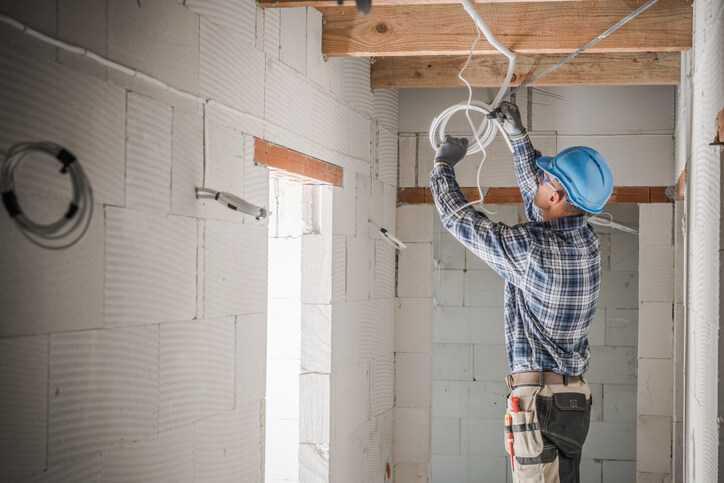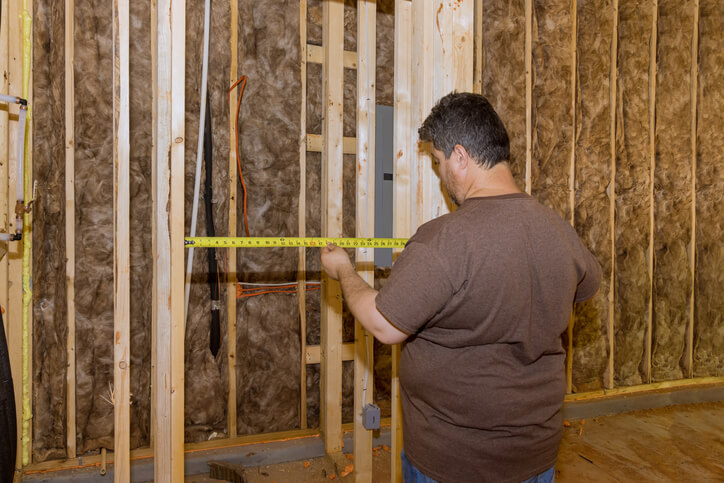3 Rough-In Tips to Remember After Electrician Training
June 07, 2023
Rough-in wiring involves installing electrical wiring, boxes, and conduit in commercial or residential buildings before the walls and ceilings are completed. It’s a necessary process that sets the foundation for a safe and efficient electrical system in any building.
Regardless of the type of project being executed, it’s important to get the rough-in phase done right the first time. Ripping up the drywall to fix issues down the line can be messy, not to mention expensive. It’s also essential to be careful with this task to avoid the risk of electric and fire hazards. Attention to detail and adherence to electrical codes are necessary for a high-quality installation.
After completing your Construction & Maintenance Electrician Pre-Apprenticeship diploma program, you’ll often be tasked with projects like these. Here, we’ll discuss three practical rough-in tips that will prove invaluable throughout your career. Incorporating these tips into your work routine after completing electrician training will help you build a reputation for excellence and contribute to electrical systems’ safe and efficient operation.
1. Plan and Prepare Adequately After Electrician College
Before starting any rough-in work, careful planning is crucial. Begin by reviewing the electrical plans and blueprints for the building to understand the project scope clearly. Take note of the locations for outlets, switches, light fixtures, and other electrical components.
Next, ensure you have all the tools and materials readily available. This includes wires, cables, conduits, junction boxes, and fasteners. Organize your supplies to avoid unnecessary delays during the installation process.
Additionally, before commencing any rough-in work, shut off the power supply to the area where you will be working. As taught in Electrician training, safety should always be the top priority. Taking this precautionary measure will prevent accidents or electrical shocks.
2. Get Accurate Measurements and Layouts
During the rough-in phase, precision is essential. Accurate measurements and layouts ensure that electrical components are installed correctly, avoiding future problems or the need for costly rework. Students who undergo their Electrician diploma program know this process is often emphasized during their training.

Mark the locations of electrical boxes on the walls and ceilings according to the provided blueprints, then use a tape measure and level to ensure the measurements are precise. Consider any obstructions, such as studs or pipes that may affect the placement of the boxes. Similarly, when running conduit or cables, maintain consistent spacing and alignment. This will facilitate future wire-pulling and make identifying and troubleshooting issues easier if necessary.
Further, pay close attention to electrical code requirements, including minimum clearance distances around boxes and conduits, and remember compliance with electrical codes is crucial for safety and ensures the installation meets industry standards.
3. Label and Document Each Step
The rough-in phase is the foundation for the entire electrical system, and documenting your work is invaluable for future reference. As you install wires, cables, and conduits, take the time to label them appropriately by using tags or markers to indicate the purpose and destination of each cable or wire. This makes it easier for future electricians or technicians to identify and troubleshoot issues.

You should also create a comprehensive documentation system that includes diagrams, plans, and any modifications made during the rough-in process. This information will be invaluable for future maintenance, repairs, or upgrades. Remember to photograph the rough-in work before the walls and ceilings are closed. These photos can provide evidence of a job well done and a visual reference if needed.
Are you looking to join a world-class Electrician college?
Contact NATS to learn how to get started.



